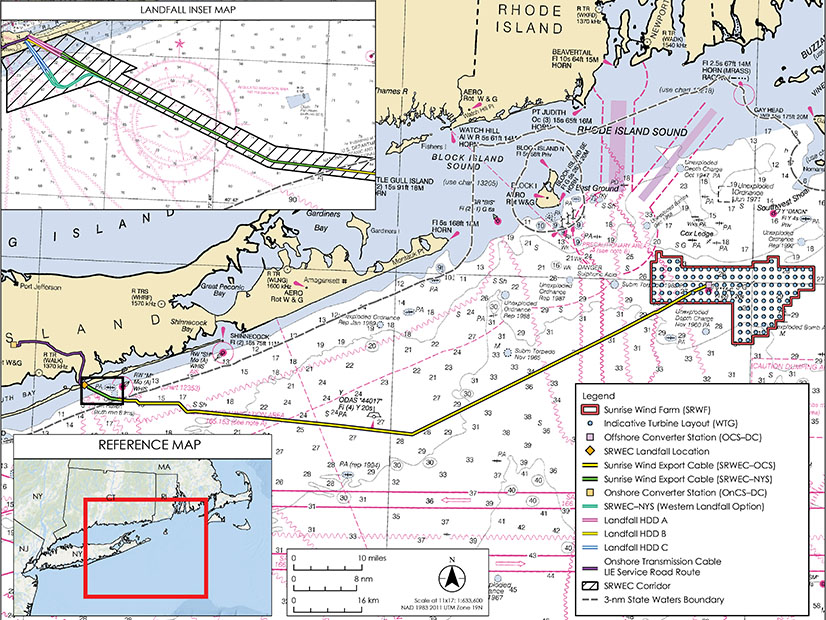The Bureau of Ocean Energy Management on Dec. 11 issued its final environmental impact statement for Sunrise Wind, endorsing an 11% reduction in the number of wind turbines for technical and environmental reasons.
The move sets the stage for Sunrise to be the seventh major offshore wind project approved in federal waters — BOEM typically follows its final EIS with a Record of Decision several weeks later, and all of the previous six were greenlit.
BOEM said Dec. 11 it plans to issue the Record of Decision in early 2024.
Securing a positive Record of Decision is the final major regulatory hurdle for Sunrise, but a different obstacle remains unresolved: paying for construction of the project, which would send 924 GW to the New York grid.
Ørsted has said it cannot proceed with the project under the financial terms negotiated with the state because the cost of construction has increased so much since the deal was struck. But the state refused to grant increased compensation. (See NY Rejects Inflation Adjustment for Renewable Projects.)
Ørsted now is focused on salvaging Sunrise by rebidding at more favorable terms. (See Ørsted Cancels Ocean Wind, Suspends Skipjack.) The state extended this option Nov. 30. (See New York Issues Expedited Renewable Energy Solicitations.)
The most recent Record of Decision by BOEM was an approval for Empire Wind 1 and 2 in late November. (See BOEM Approves Empire Wind.) The two offshore wind farms would send 2 GW of electricity to New York, but they, too, are under significant financial pressure. The developers of Empire Wind have said they cannot start construction without more money.
Nonetheless, the announcement of the final EIS for Sunrise was welcomed as good news for a fledgling U.S. industry that has been struggling in 2023.
Oceantic Network, a trade association, said in a news release: “Advancement of the Sunrise Wind project further strengthens confidence in the U.S. permitting system as the administration is nearing its halfway point in reviewing 16 projects and conducting seven new lease auctions by the end of 2024, approving 8 GW of power generation for construction. Adhering to this commitment is critical to drawing new and securing old investments in U.S. supply chain, and the network applauds BOEM’s consistent efforts to reach this goal.”
The plan Sunrise Wind submitted to BOEM called for up to 94 wind turbine generators across 86,823 acres of OCS-A 0482, 27 nautical miles east of New York’s Long Island and 17 nautical miles south of Martha’s Vineyard in Massachusetts.
After reviewing comments and technical data, BOEM developed a preferred alternative — 84 wind turbines — for reasons of geotechnical feasibility and impact on the marine environment.
The actual potential effects of Sunrise are identified in the EIS as a range of positive and negative possibilities. These effects are similar to those predicted in the EIS documents BOEM prepared for other projects stretching between Cape Cod, Mass., and Cape May, N.J.: Sunrise could have major negative impacts on the endangered North Atlantic right whale, commercial and recreational fishing, search-and-rescue operations, scientific research and the view from land.


